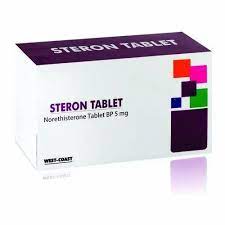trama
Introduction to Trama
Trama, commonly known by its generic name Tramadol, is a widely used medication for managing moderate to moderately severe pain. It belongs to a class of drugs called opioid analgesics, which work by altering the way the brain perceives pain. Trama is often prescribed for conditions such as chronic pain, post-surgical pain, and injury-related discomfort. Its effectiveness and relatively lower risk of addiction compared to other opioids make it a popular choice among healthcare providers. Trama is available in various forms, including tablets, capsules, injections, and syrups, catering to diverse patient needs and preferences.
Composition of Trama
The primary active ingredient in Trama is Tramadol hydrochloride, typically available in a 50mg dosage per tablet or capsule. Tramadol works by binding to the brain's opioid receptors, which are part of the central nervous system. This action alters the perception of pain and provides relief. Additionally, Tramadol inhibits the reuptake of neurotransmitters such as serotonin and norepinephrine, further enhancing its pain-relieving effects. This dual mechanism of action makes Trama an effective choice for managing various types of pain.
Uses for Trama
- Relief of moderate to moderately severe pain
- Management of chronic pain conditions
- Pain relief following surgery
- Alleviation of injury-related pain
Side Effects of Trama
- Dizziness
- Nausea
- Constipation
- Headache
- Drowsiness
- Dry mouth
- In rare cases, seizures or serotonin syndrome
Precautions for Trama
Before taking Trama, it is essential to inform your healthcare provider about any allergies, medical history, or current medications. Trama should be used with caution in individuals with a history of substance abuse, as it can be habit-forming. It is not recommended for use in children under 12 years old. Pregnant or breastfeeding women should consult their doctor before using Trama, as it may have adverse effects on the baby. Avoid consuming alcohol while taking Trama, as it can enhance drowsiness and increase the risk of side effects.
Trama in Different Forms
Trama is available in several forms to accommodate different patient needs:
- Tablets: Typically available in 50mg doses, taken orally for pain relief.
- Capsules: Similar to tablets, capsules offer an alternative oral administration method.
- Injections: Administered by healthcare professionals for immediate pain relief in clinical settings.
- Syrup: A liquid form, useful for patients who have difficulty swallowing pills.
Conclusion
Trama is a versatile and effective medication for managing various types of pain. Its availability in multiple forms, such as tablets, capsules, injections, and syrups, allows healthcare providers to tailor treatment to individual patient needs. While Trama is generally well-tolerated, it is crucial to use it under medical supervision to minimize the risk of side effects and ensure safe use. By understanding its composition, uses, and precautions, patients can make informed decisions about their pain management options.
Similar Medicines
More medicines by West-Coast Pharmaceutical Works Ltd
Available in 3 variations

Trama 50mg Tablet
strip of 10 tablets

Trama 100mg Tablet SR
strip of 10 tablet sr

Trama 50mg Tablet DT
strip of 10 tablet dt
Disclaimer : This information is not a substitute for medical advice. Consult your healthcare provider before making any changes to your treatment . Do not ignore or delay professional medical advice based on anything you have seen or read on Medwiki.
trama
Prescription Required
Manufacturer :
West-Coast Pharmaceutical Works LtdComposition :
tramadol












.svg)
